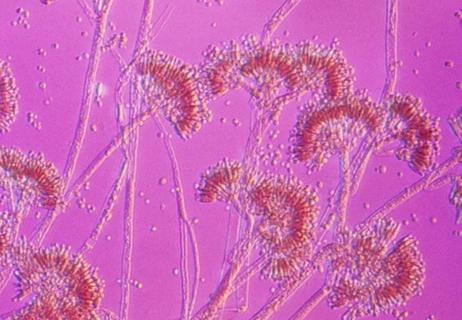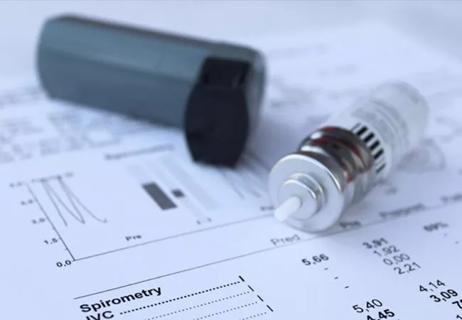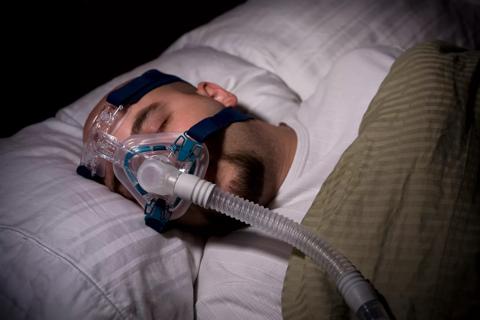Advertisement
Mechanism likely related to reduced capacity for release of leukotrienes

Advertisement
Cleveland Clinic is a non-profit academic medical center. Advertising on our site helps support our mission. We do not endorse non-Cleveland Clinic products or services. Policy
In 1968, Samter and Beers described a clinical syndrome currently known as aspirin-exacerbated respiratory disease (AERD), characterized by a triad of nasal polyposis, bronchial asthma and “life-threatening reactions to acetylsalicylic acid.” Despite avoidance of aspirin and cross-reacting nonsteroidal anti-inflammatory drugs, patients with AERD frequently experience refractory rhinosinusitis and asthma — in some cases requiring numerous sinus surgery procedures. Up to 50 percent of AERD patients have severe asthma and are steroid dependent.
In the Department of Allergy and Clinical Immunology at Cleveland Clinic’s Respiratory Institute, aspirin desensitization is commonly performed as a therapeutic intervention to improve the clinical course of AERD. Aspirin desensitization is cost effective and has been associated with statistically significant benefit in patients with AERD, including improved quality of life and reductions in hospitalization and emergency department utilization, annual numbers of outpatient visits, medication reliance, respiratory symptoms, episodes of sinusitis, need for polypectomy and sinus surgery procedures. In this procedure, tolerance is induced via administration of aspirin in a graded-dose fashion, until the patient can tolerate 325 mg without respiratory reaction. Despite use of combination controller therapy including antileukotrienes, and ensuring that asthma is well controlled at the time of the desensitization procedure, aspirin-provoked reactions during this procedure can be volatile and entail serious bronchospasm.
We hypothesized that administration of omalizumab would foster a significant reduction in the capacity for mediator release provoked by aspirin in patients with AERD, and attenuate respiratory reaction during aspirin desensitization. Our results were published in Annals of Allergy and Immunology.
Subjects fulfilling criteria for both AERD and label criteria for omalizumab were randomized to either omalizumab or identical placebo (2:1) for 16 weeks. Within four weeks after receiving the study drug, aspirin desensitization was performed. Subjects then took aspirin daily to perpetuate the desensitized state.
Aspirin desensitization was carried out according to recommended protocol, beginning at 30 mg and advancing with serial dosing to 650 mg. Subjects were classified into five groups based on the observed respiratory reaction to aspirin:
(1) Combined upper and lower respiratory reaction (decline in forced expiratory volume in one second [FEV1] > 20 percent).
(2) Upper airway reaction with partial lower respiratory reaction (subthreshold decline in FEV1 = 15-20 percent).
(3) Isolated upper respiratory reaction.
(4) Isolated lower respiratory reaction (FEV1 decline > 20 percent).
(5) No respiratory reaction.
Urine samples were obtained for measurements of leukotriene E4 (LTE4).
Eleven subjects completed aspirin desensitization. Seven were randomized to omalizumab and four to placebo. Each of the 11 subjects had moderate-severe persistent asthma and were taking combination controller therapy. We found no statistically significant differences at baseline in age, body mass index, number of sinus surgeries or FEV1; however, all four subjects randomized to receive placebo were women, while four women and three men were randomized to the omalizumab arm. We observed a statistically significant difference in mean IgE level, which was higher in those randomized to omalizumab.
Advertisement
Four of the 11 subjects who underwent aspirin desensitization had isolated upper airway reactions, two had combined upper and lower airway reactions with declines in FEV1 > 20 percent of baseline, and five subjects completed aspirin desensitization without respiratory reaction. We observed four reactions at the 100 mg challenge dose. One combined reaction and one upper airway reaction occurred at 60 mg and 150 mg, respectively.
When the blind was removed after study completion, we found that two subjects in each group had upper airway reactions. The two subjects with combined reactions had received placebo. The five subjects who completed aspirin desensitization with no respiratory reaction had all been randomized to omalizumab. The patterns of respiratory reaction during aspirin desensitization were significantly different (P = 0.04, Fisher Exact Test), indicating that compared with placebo, randomization to omalizumab was associated with a statistically significant increase in the likelihood that subjects would exhibit no respiratory reaction during aspirin desensitization.
Mean urinary LTE4 levels remained relatively low during aspirin desensitization in the five nonreactors. We observed a statistically significant overall difference between LTE4 levels in subjects receiving omalizumab who did not exhibit respiratory reactions compared to subjects randomized to placebo (P = 0.035, mixed model with interaction). Compared with levels obtained after the 100 mg dose in nonreactors, urinary LTE4 levels were significantly higher with reaction in placebo subjects.
The strengths of this study include its randomized, double-blind, placebo-controlled design, and inclusion of a 650 mg aspirin challenge dose to confirm that “silent desensitization” had occurred. Several case reports in which omalizumab was associated with induction of aspirin tolerance in patients with AERD support our observations.
Our findings imply that the protective effect of omalizumab is related to a diminished capacity for leukotriene release with exposure to a provocative dose of aspirin. Clinicians should be aware that false-negative aspirin challenges may be observed in AERD patients receiving omalizumab. These findings cannot be generalized to patients with AERD who have received omalizumab for less than 16 weeks or to patients with AERD not fulfilling label criteria for omalizumab. Further studies to explore the therapeutic utility of omalizumab in AERD patients undergoing aspirin desensitization are warranted.
Dr. Lang is Chair of the Department of Allergy and Clinical Immunology as well as Co-Director of the Asthma Center and Director of the Allergy/Immunology fellowship program.
[This protocol was approved by the Cleveland Clinic Institutional Review Board, and for an IND by the United States Food and Drug Administration. Genentech/Novartis provided financial support, but had no role in the design of this study, data tabulation, analysis or interpretation.]
Advertisement
Advertisement

A detailed clinical history should be obtained directly from patients to determine their risk of penicillin

Cleveland Clinic allergist and immunologist weighs in on its benefits and limitations

A new framework for a successful step-down

19 in 20 will not have an allergic reaction

The agent-based model aims to improve prediction accuracy

VOC analysis could provide biological insight into risk factors associated with CDI

Quantum computing being studied as a means to help improve predictive performance, accuracy

A review of conservative, pressure-based and surgical treatments for OSA